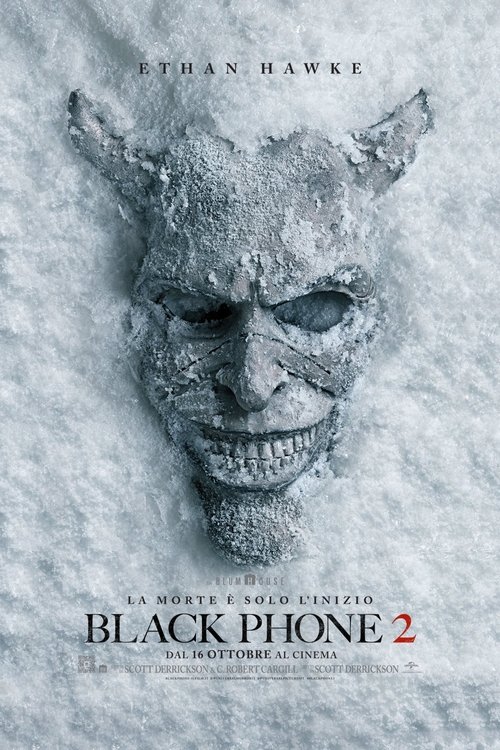FM
Francesco Mirabelli
•With Black Phone 2, Derrickson expands the world of the first film, but he does so by taking risks and deviating significantly from the prototype. The story is set in 1982, a few years after the original events: Finney (Mason Thames) cannot help but think about his ordeal in the basement of the psychopath known as the Grabber and tries to rebuild his life alongside his sister Gwen (once again played by Madeleine McGraw), who continues to have disturbing nightly visions. Their apparent peace is shattered when Gwen discovers that her new visions are connected to their mother, who died by suicide when they were children, and to a summer camp in the Midwest where she had worked as an instructor. Gwen, Finn, and their friend Ernesto then decide to venture to Alpine Lake, near a frozen lake, where the vacation season has been delayed due to a violent snowstorm. In this place, haunted by ghosts of the past, the truth about the Grabber seems to be hidden.
Black Phone 2 starts off slow and hesitant. Derrickson takes almost an hour to get the story moving, dedicating too much time to repetitive dream sequences and moments that dwell on Gwen's dreams. These dreams, however, are not mere fillers; visually, they are highly evocative and directly reminiscent of the cursed super8 reels from Sinister, another cult classic by the director. Derrickson has a rare ability to instill terror through images: his horror is built on visual suggestions, light plays, and carefully crafted shots that disturb more than any "jump scare." However, in Black Phone 2, this talent is diluted in an excessive runtime (nearly two hours) that would have benefited from tighter editing.
When the film finally picks up in the second half, Black Phone 2 becomes a concentrated dose of pure horror. Here, Derrickson has fun blending influences from great genre classics, especially the A Nightmare On Elm Street saga and Friday the 13th. From the former, he borrows the idea of an entity acting through dreams: the Grabber is a variant of Freddy Krueger, a shadow that watches, haunts, and kills while moving between sleep and wakefulness. From Friday the 13th, he takes the summer camp setting, the suspicious instructors, and the lake—here frozen and eerie—that becomes the stage for the finale. Even the Grabber's movements recall Jason Voorhees, with a heavy, menacing gait and an axe always ready to strike.
The Grabber's new look is terrifying and evocative: no longer just a masked serial killer, but a supernatural creature with almost animalistic traits, a cross between demon (the mask has always made this clear) and specter. The choice to make him less human and more symbolic works and restores to his image that iconic dimension that makes him a perfect boogeyman.
On the casting front, Derrickson reaffirms his focus on young actors. Madeleine McGraw, who was the co-star in the first film, becomes the true emotional core of the story here. She carries the film effortlessly and lends credibility to the more visionary moments, balancing fragility and determination. Joining her is Mason Thames, whom we recently saw in How to Train Your Dragon, bringing more confidence and courage to his character. Also returning are Jeremy Davis as the father and, of course, Ethan Hawke behind the mask of the demonic Grabber.
The final act, set on the frozen lake, is anthological: perfectly calibrated tension, extraordinary visual impact, and a crescendo that culminates in a sequence combining suspense, splatter fun, and visionary flair. It is here that Black Phone 2 reaches its peak, reminding us why Derrickson is one of the few mainstream directors capable of crafting horror through indie cinema logic.
It's a pity the film gets to this point after a first hour weighed down by narrative redundancies. If the introductory part had been trimmed and the development made more dynamic, Black Phone 2 could have become a small classic of contemporary horror. As it stands, it remains an effective sequel, visually rich and consistent in spirit, but somewhat unbalanced between ambition and restraint, still inferior to the first chapter.






